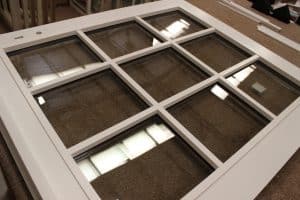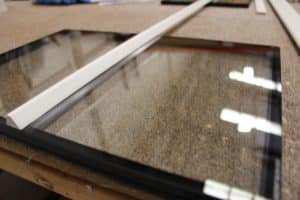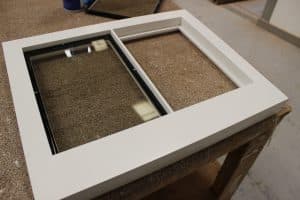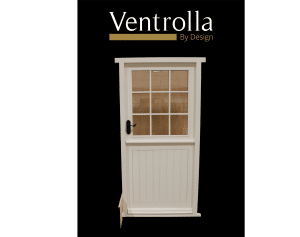The Difference Between Astragal Bars and Through Bars
When it comes to window designs, details matter. The choice of bars in windows can significantly affect both aesthetics and functionality. Two popular options are Astragal bars and Through bars. This post will delve into the differences between these two types of window bars to help you make an informed decision for your next project.
Astragal Bars
Definition and Design:
Astragal bars are decorative features applied to the interior and exterior surfaces of a windowpane. They give the appearance of divided panes of glass, commonly referred to as “muntins” or “grilles,” but the glass itself remains in one large piece. This design creates the illusion of smaller, individual panes without compromising the integrity and insulation of the window.

Aesthetic Appeal:
Astragal bars are often chosen for their classic and elegant look. They are commonly seen in traditional or period-style homes, where they enhance the historic charm. The bars add depth and texture to the window, making them visually appealing from both the inside and outside.
Practical Advantages:
Energy Efficiency: Since the glass is not physically divided, this maintains the window’s full insulating properties, making them energy efficient, resulting in lower U-values compared to windows with Through bars.
Installation and Cost: Typically, Astragal bars can be more cost-effective and simpler to install than true divided lites, as they do not require the complex glazing process.
Through Bars
Definition and Design:
Through bars, also known as true divided lites (TDL), involve the actual division of the windowpane into multiple smaller panes. Each section of glass is separated by a physical bar, creating a grid of individual glass pieces within the window frame.

Aesthetic Appeal:
Through bars offer an authentic, classic look that is highly valued in architectural styles requiring true historical accuracy. The genuine division of panes provides a level of detail and craftsmanship that isn’t replicated with imitation bars, although this is only noticeable upon closer inspection.

Practical Advantages:
Authenticity:
For restoration projects or for maintaining historical integrity, through bars are the ideal choice. They provide an authentic period look that is true to the architectural style.
Customisation:
These bars allow for a higher level of customisation in terms of the size and shape of each pane, catering to unique design specifications.
Considerations:
Energy Efficiency:
Through bars can slightly reduce the insulating properties of a window compared to a single pane, potentially affecting energy efficiency.
Cost:
Generally, windows with through bars can be more expensive due to the additional materials and labour required for their construction.
Choosing the Right Option
Factors to Consider:
Architectural Style:
Match the bar type to the style of your home. They suit both traditional and modern styles, while through bars are perfect for historical accuracy.
Energy Efficiency:
If insulation and energy savings are priorities, Astragal bars may be the better choice.
Budget:
Consider the installation and long-term maintenance costs. Astragal bars might offer a more budget-friendly solution without sacrificing visual appeal.
Personal Preference:
Ultimately, your preference for authenticity versus convenience will guide your decision.

Did you know that Astragal Bars can also be applied to doors?
Adding Astragal bars to doors can complement your window designs, providing a cohesive and stylish look throughout your home’s architectural elements. This option allows you to extend the classic elegance and energy efficiency to your doorways, enhancing both their visual appeal and functionality.
Choosing the right option for your home
Both Astragal Bars and Through bars have their unique benefits and aesthetic appeal. Understanding differences helps choose options to enhance windows, complement home style, and meet practical needs effectively. Whether you prefer the traditional elegance of Astragal Bars or the authentic craftsmanship of Through Bars, both options can transform your windows into a standout feature of your home. Each offers a unique way to enhance your space with style and character.
For more guidance on window designs or to explore our range of products, feel free to contact us or visit our showroom. Your perfect windows are just a decision away!
